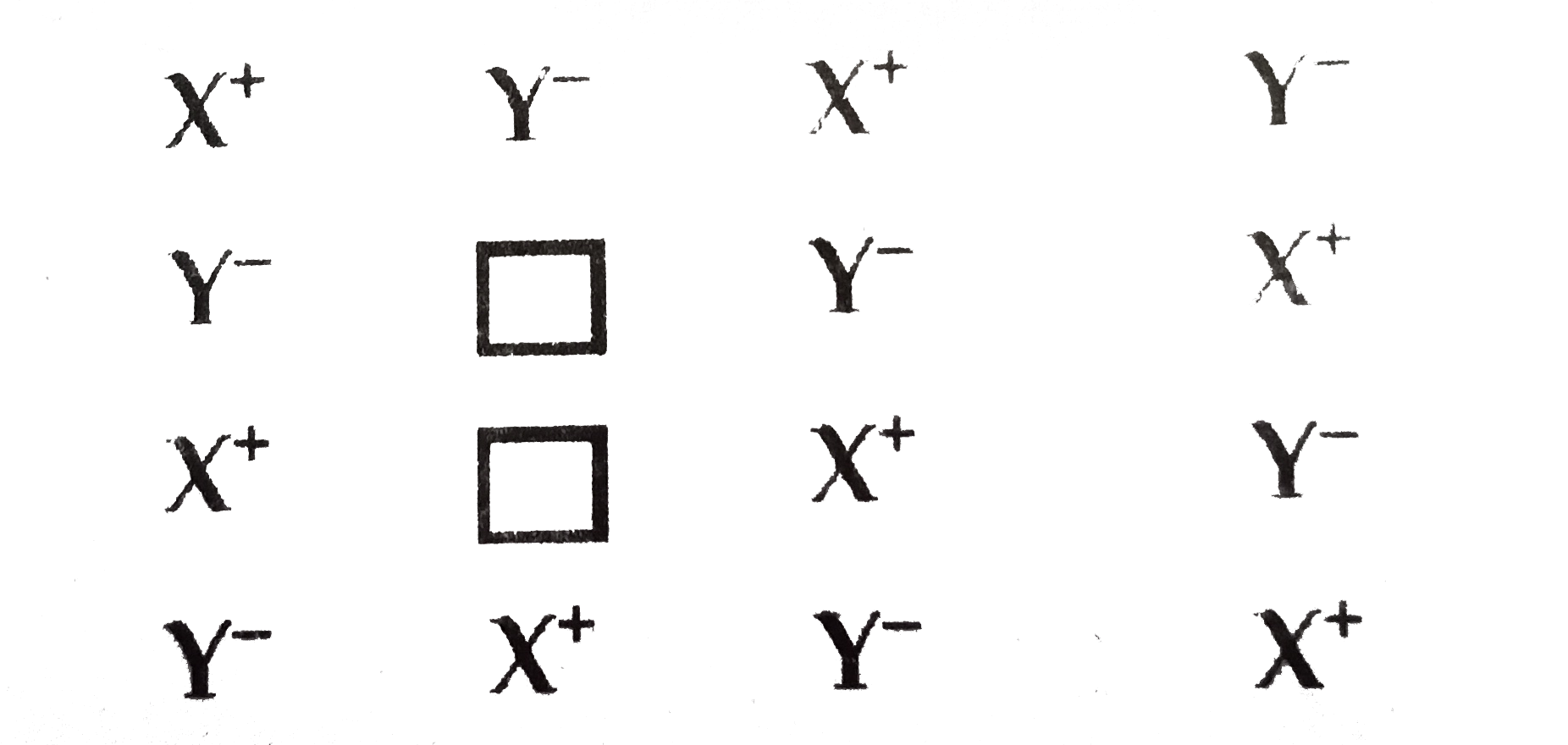Why the defects of the crystalline solids are called thermodynamic defects?
To understand why the defects of crystalline solids are called thermodynamic defects, we can break down the explanation into several steps:
Step 1: Understanding Perfect Crystals
- A perfect crystal is defined as a solid where all the atoms or ions are arranged in a highly ordered structure without any vacancies or defects. According to the third law of thermodynamics, a perfect crystal can theoretically exist at absolute zero temperature (0 Kelvin).
Step 2: Temperature and Defects
- As the temperature of a crystalline solid increases from absolute zero, the thermal energy of the particles also increases. This increase in energy allows for more movement and vibration of the atoms or ions within the crystal lattice.
Step 3: Formation of Defects
- With the increase in thermal energy, there is a greater likelihood that some lattice sites (positions where atoms or ions are supposed to be) may become unoccupied. This means that vacancies (missing atoms or ions) can form, leading to the creation of defects in the crystal structure.
Step 4: Relationship Between Temperature and Defects
- The number of defects in a crystal increases with temperature. At higher temperatures, the probability of finding unoccupied lattice sites rises, resulting in a higher concentration of defects.
Step 5: Thermodynamic Perspective
- Since the formation of these defects is dependent on temperature and the energy associated with the thermal motion of the particles, they are referred to as thermodynamic defects. This term emphasizes the relationship between temperature, energy, and the stability of the crystal structure.
Conclusion
- Therefore, defects in crystalline solids are called thermodynamic defects because their formation is influenced by temperature and the associated thermodynamic principles.
---
- A perfect crystal is defined as a solid where all the atoms or ions are arranged in a highly ordered structure without any vacancies or defects. According to the third law of thermodynamics, a perfect crystal can theoretically exist at absolute zero temperature (0 Kelvin).
- As the temperature of a crystalline solid increases from absolute zero, the thermal energy of the particles also increases. This increase in energy allows for more movement and vibration of the atoms or ions within the crystal lattice.
- With the increase in thermal energy, there is a greater likelihood that some lattice sites (positions where atoms or ions are supposed to be) may become unoccupied. This means that vacancies (missing atoms or ions) can form, leading to the creation of defects in the crystal structure.
- The number of defects in a crystal increases with temperature. At higher temperatures, the probability of finding unoccupied lattice sites rises, resulting in a higher concentration of defects.
- Since the formation of these defects is dependent on temperature and the energy associated with the thermal motion of the particles, they are referred to as thermodynamic defects. This term emphasizes the relationship between temperature, energy, and the stability of the crystal structure.
- Therefore, defects in crystalline solids are called thermodynamic defects because their formation is influenced by temperature and the associated thermodynamic principles.
Similar Questions
Why the defectsof the crystalline solids are called thermodynamic defects?
View SolutionA crystalline solid
View SolutionWhy are crystalline solids anisotropic ?
View SolutionWhy amorphous solids are called isotropic whereas crystalline solids are called anisotropic ?
View SolutionAssertion : Due to Frenkel defect, density of the crystalline solid decreases.
Reason : In Frenkel defect, cation or anion leaves the crystal.
View SolutionStatement : Due to Frenkel defect the density of the crystalline solid remains same.
Explanation : In Frenkel defect, no cations or anions leave the lattice.
View SolutionWhat type of crystalline solid is boron nitride? Why?
View SolutionName the defect in the following crystal:

View SolutionWhy stoichiometric defects are also called intrinsic defects?
View SolutionWhich point defect in crystals of a solid decreases the density of the solid?
View Solution
